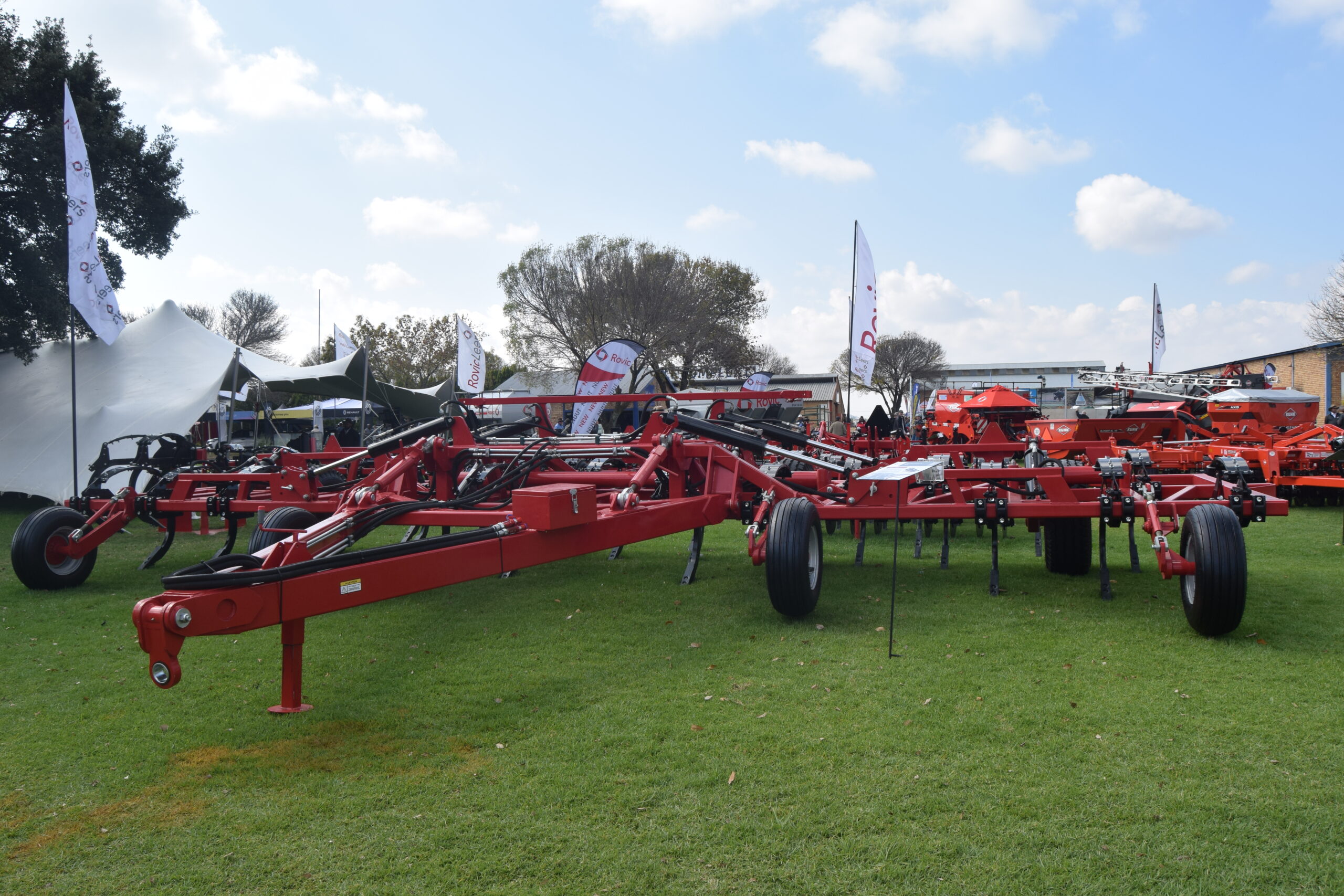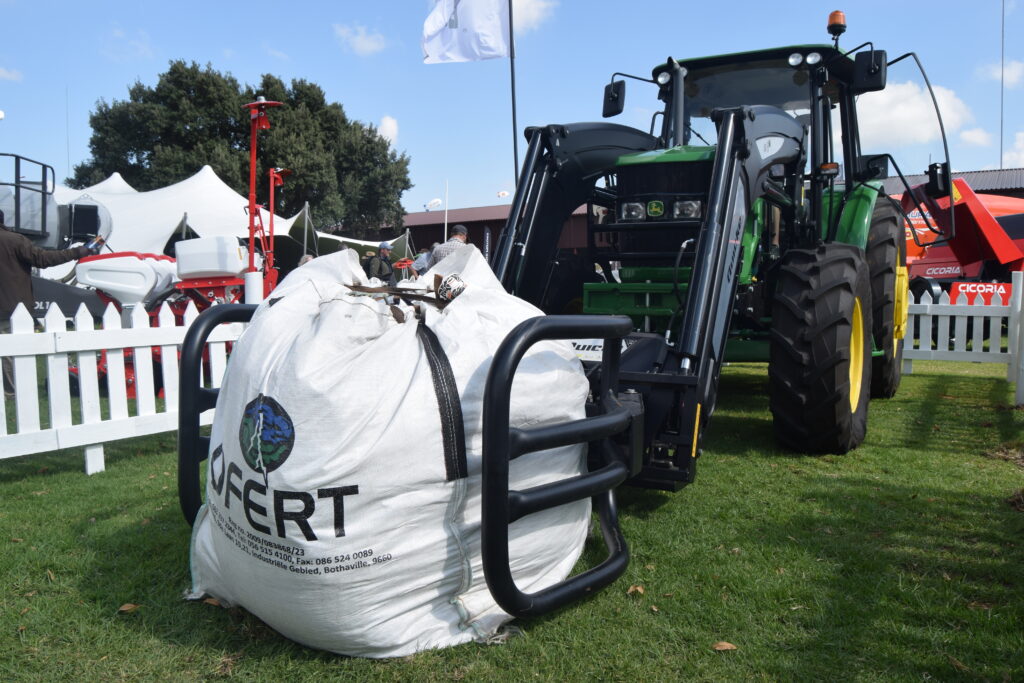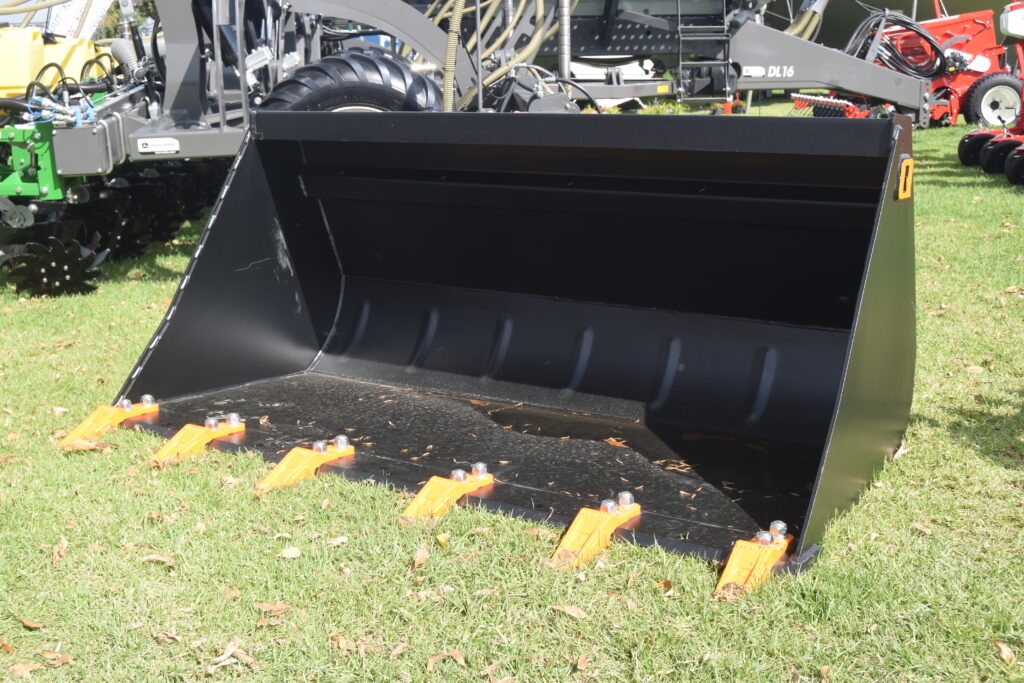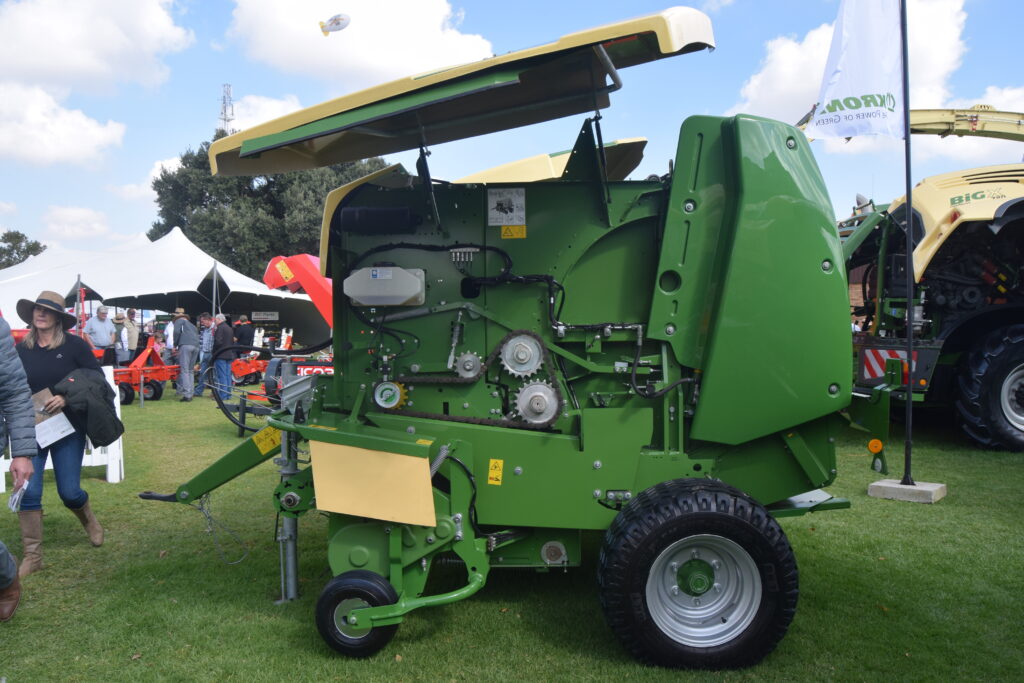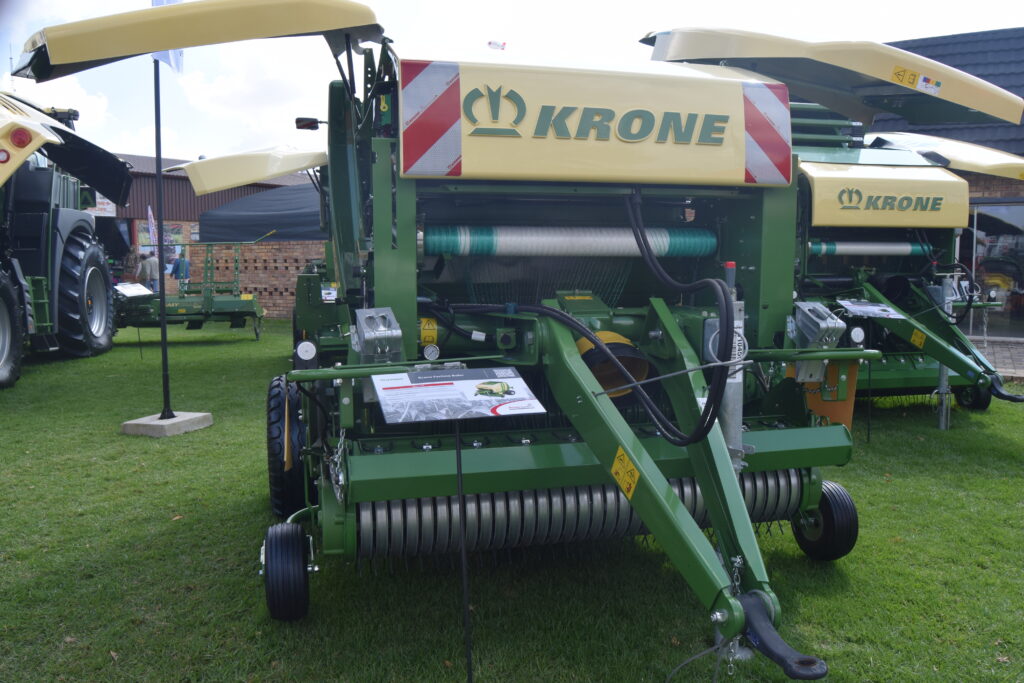Rovic Leers remains at the forefront of high-quality mechanisation and technology for South African farmers. With 2023’s NAMPO harvest day, this group showed again that their stable includes a tool for every need.
Whether you plant silage for your livestock or farm with grain, fruit or vegetables, you need a tool that makes your work easier. Whether it is a tool that assists with soil cultivation, a spreader that spreads fertiliser and manure, or a baler that quickly processes hay, you need equipment that can rely on! The good news is that you do not need to look far for your solution. Rovic Leers has a variety of mechanisation solutions for you.
This distributor supplies the whole of sub-Saharan Africa and is focused on the needs of farmers. Their extensive network ensures that every farmer receives top quality service that in accordance with Africa’s needs.
At the recent NAMPO harvest day in Bothaville, the company exhibited a wide collection of implements. This included products from Krone, Kuhn, Rovic Leers and Quicke, amongst others.
Rovic’s Synco-Spreader RSM 10-14
“This spreader is a 10 m3 machine with a maximum loading capacity of 14 tonnes,” explains Carel Steyn, Product Manager of the company’s Research and Development Department.
A beam on the drawbar prevents the machine from shaking back and forth. There are also rubber bushings between the chassis and the drawbar. All this makes it easier to transport its load.
“All the hydraulic pipes lie neatly and safely in the steel channel on the body so that there are no loose pipes that can get stuck,” he says. “The hydraulic system can control the two rear discs separately.”
Inside the spreader’s bowl are the twin feed chains which can also be controlled separately. Gearboxes on either side of the implement control the chains.
The spreader is equipped with ISOBUS as standard. Thanks to that, there are two settings the operator can use, namely load sensing and constant pump actions. Furthermore, the machine also boasts a scale and GPS-controlled variable application.
“All working parts that come into contact with the lime or fertiliser are made from stainless steel – including the discs with their fins, and the gate opening,” Carel explains. “Each disk has two bearings that are spaced far apart to maintain the forces of the disks so that the motors are not damaged.”
“There is also a sensor that measures the speed at which the disks turn.”
Added features are blocks that can be used to brake the wheels and a toolbox where the farmer can store any tools he may need on the land.
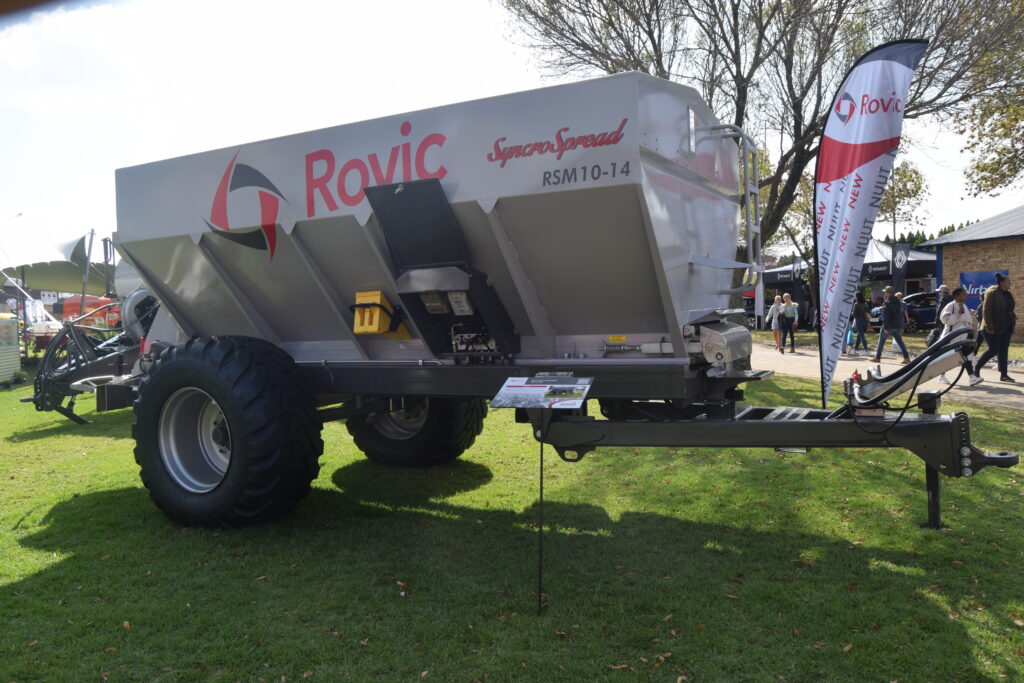
The Synco-Spreader RSM 10-14’s parts that come into contact with fertiliser or lime are made of stainless steel to ensure a long life.
Kuhn Axis spreader 40.2 MEMC
The Kuhn Axis spreader is fully equipped with the ISOBUS system, variable application and section control.
“The standard model is available with a hopper of 1 400 litres, but it can be increased to 3 300 litres,” says JP Venter, Area Manager for Limpopo. “It also has parking wheels that make attaching and detaching the spreader child’s play.
MEMC stands for Mechanical Electronic Mass Flow Control.
“The spreader is equipped with the Telemat system which facilitates spreading on your field’s borders,” he says. “What makes it efficient is that it doesn’t have load cells for calibration. Each motor has sensors that measure the fertiliser falling out and adjusts the spreader accordingly. This means that the slope and the speed of the spreader in the field have no influence on the calibration.”
The CDA system determines how the fertiliser falls over the discs. It controls the quantity, the sections and the spread width.
There are also 40.2 HEMC spreaders available.
Krone Big X 780 harvester with the Easy Collect 750/3 maize table
“The harvester’s engine delivers 582 kW (780 hp) and it cuts 7,5 metres wide. The table folds into three parts, hence the 780, 750 and 3,” explains Philip Oosthuizen, Cape Town’s Branch Manager. He says: “This maize table is unique because it measures the moisture content of the material and then automatically adjusts the cutting length accordingly.” The harvester is available in the following models: 680, 780, 860, and 1 180 (with a 12-cylinder engine).
The drum of the harvester is 660 mm in diameter and 800 mm wide. The harvester comes to a stop when any foreign objects enter the rollers.
The header section of the harvester keeps itself level over the uneven sections in the field.
“Krone builds machines that are easy to maintain, require low maintenance costs and have the minimum downtime,” says Philip.
The cabin is comfortable and has all the latest technology that improves the operator’s working conditions.
The harvester is released as 4×2 and 4×4, but in South Africa the 4×4 option is mainly available.
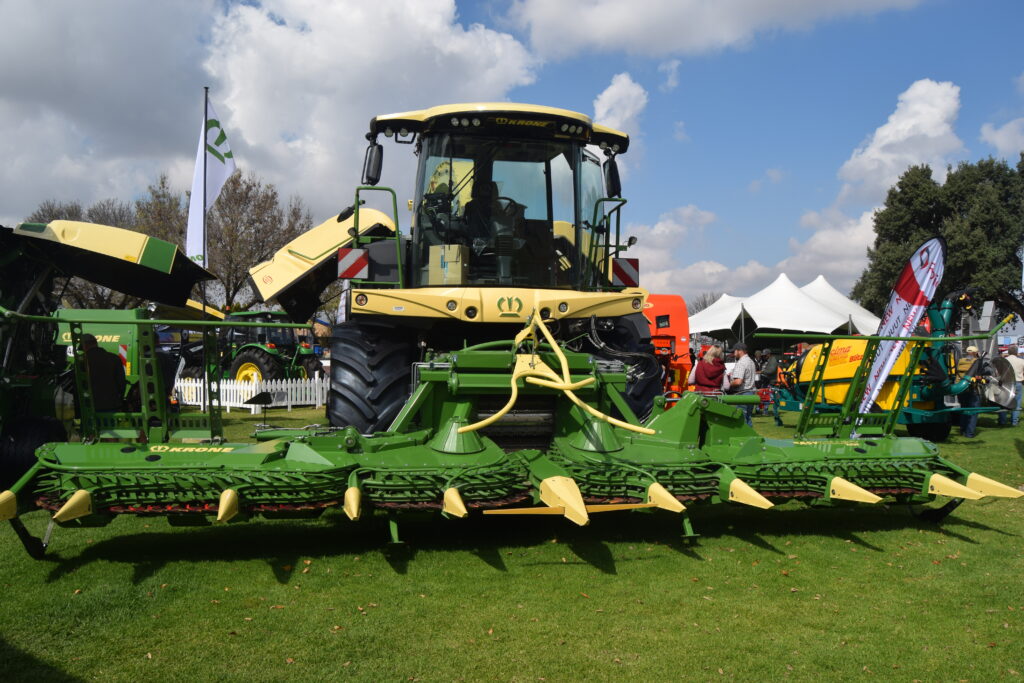
Krone Big X 780 harvester with the Easy Collect 750/3 maize table.
Rovic Leers Super 19 ripper
The Super 19 ripper from Rovic Leers is made for all conditions. It boasts a self-correcting leaf spring kick-out action to avoid damage.
“This model is 1,10 m wide. It has a working depth of 470 mm and is high enough for unobstructed material flow under the frame,” says Pieter van Biljon from Rovic Leers.
The implement is available in 20-, 25- and 27-tine options. There is also a DLB model with straighter tines. It is mainly for topsoil cultivation of stony soil, or a hard top layer.
“This implement requires tractor power of 18 to 20 kW per tine. Various roller options are available, such as the gravity flow rollers and positive pressure rollers.”
Quicke backhoes with quick coupling for versatility
André van Heerden, Area Manager for the Free State, speaks highly of this equipment, which was made to quickly attach different loader attachments. The Swedish manufacturer has perfected the recipe since their inception in 1949, manufacturing between 25 000 and 30 000 different attachments per year.
“These backhoes do not have the standard straight beam, but one with a curve that makes the structure sturdy yet light,” says André. “This, coupled with the way the pieces attach, gives the loaders a longer service life.” The attachments attach automatically. You just drive into position and listen for the characteristic ‘click’.
”To detach it, you just pull out the knob on the arm and reverse away.”
The manufacturer has a loader for every tractor! It is available in a number three for 40 kW tractors and eight for 200 kW tractors. Eighteen models are available.
In total, there are also more than 50 different attachments, including earthmoving, silage handling, bale handling, lifting and high-volume buckets. Furthermore, the loaders are classified as S (standard), M (heavy duty) and L (long).
The loader is controlled from its own console in the tractor’s cab according to the Quicke companion system. The joystick can be programmed to quickly perform specific functions with the loader.
“The backhoe can lift 1,4 to 2,7 tonnes when fully extended,” concludes André.
Rovic Leers’ formidable Quicke loaders have different attachments to ensure there is a solution for every farming task. The loader arms are also available in different models to suit each tractor.
Kuhn Excelerator 8010
The main use of this vertical cultivator is to cut dry material into smaller bits and mix it into the soil to form a mulch without compacting the soil.
“It is a vertical cultivation action with ribbed discs that cut into the soil,” says Mike Lombaard, Rovic Leers’ Area Manager for Mpumalanga. “Kuhn adapted the implement so that the angle at which it penetrates the soil can be adjusted: at 1° you have absolute tilling. At 8° there is more of a mixing action. Discs are spaced 18 cm apart.
“Behind the first row of discs follows a set of spring-loaded tines that break up clods and spread material evenly over the entire surface.”
Hydraulic pressure ensures that the implement maintains the correct working depth throughout.
After the next set of cutting disks follows the seed bed rollers which prevent compaction so that the rear rollers can form a neat seed bed – ready for the planter.
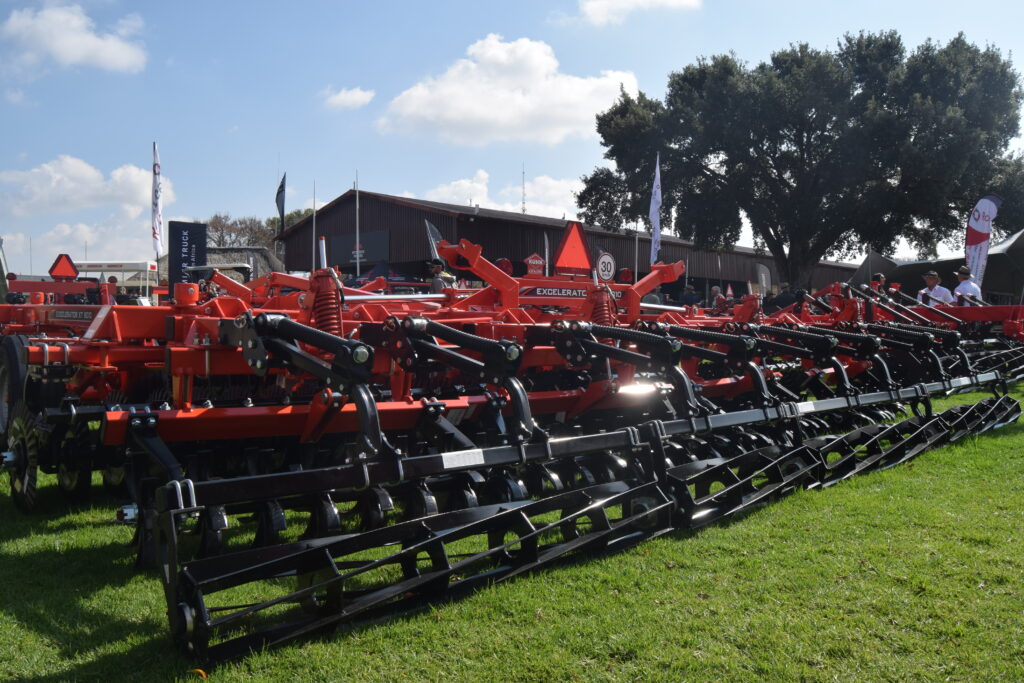
The Excelerator is perfect for vertical cultivation without soil compaction.
Fortima and Veripack round balers from Krone
There are many similarities between Krone’s Fortima and Veripack balers, but there are also differences to suit different needs. Mike Lombaard explains that both have the EasyFlow intake which works without cams to enable a higher throughput capacity and lower maintenance costs.
“The feed rollers flatten the material to take it in and prevent it from rolling forward,” he says. “The pick-up width is 2,15 m.”
Both models’ cutting capacity is adjustable with wheels along the side, The difference between the two balers is that the Fortima’s wheels run freely where the Veripack’s floating pick-up runs on its own wheels.
“Both are equipped with a net binding action which is controlled by the ISOBUS terminal. Both also have a lubrication system that keeps the chains oiled and extends their life,” Mike adds. The tension of the chains is kept constant by springs.
The Fortima 1250xcut model. The 1250xcut has a knife case that can be adjusted for different cutting lengths.
The Veripack is a high-density, high-volume baler. Its central lubrication system and binding mechanism works hydraulically.
“You can make bales from 0,8 to 1,6 m and it is also available in the 1,6 m Veripack and the 1,9 m Veripack xcut,” says Mike.
- Rovic Leers’ Krone Fortima round baler.
- The Veripack round baler from Krone.
For more information on the wide range of mechanisation solutions, visit Rovic Leers’ website.

